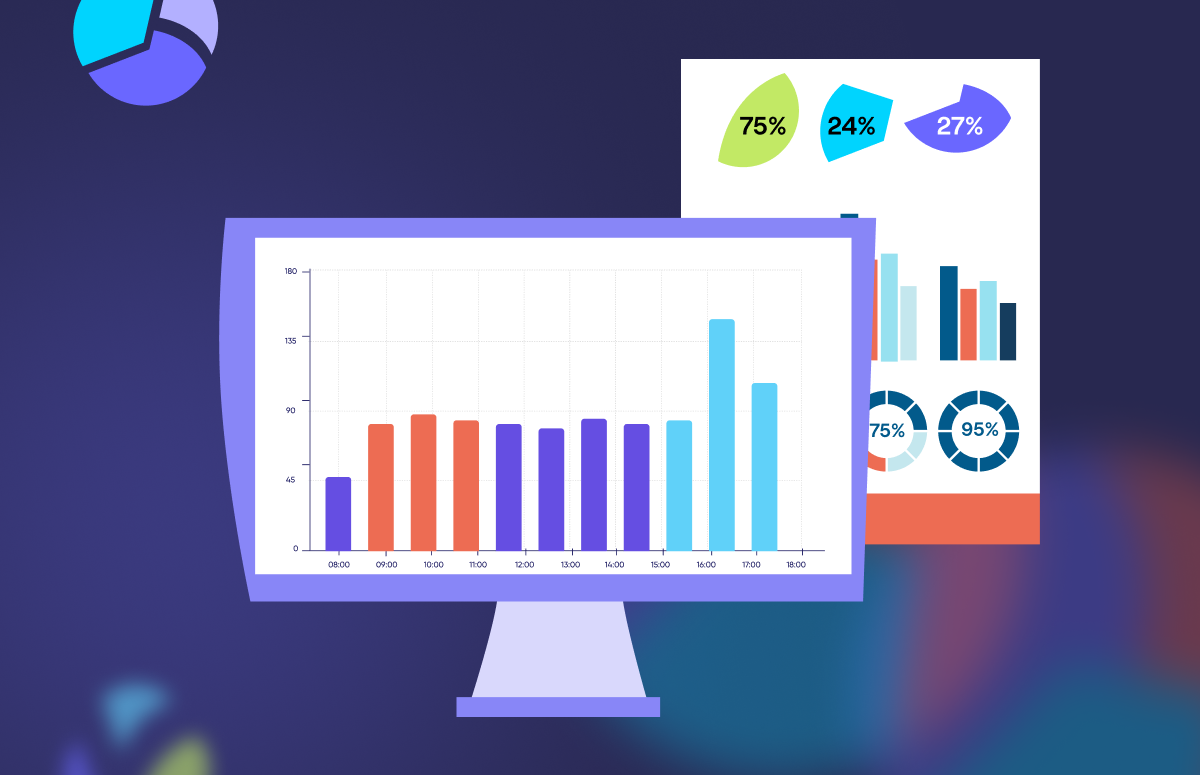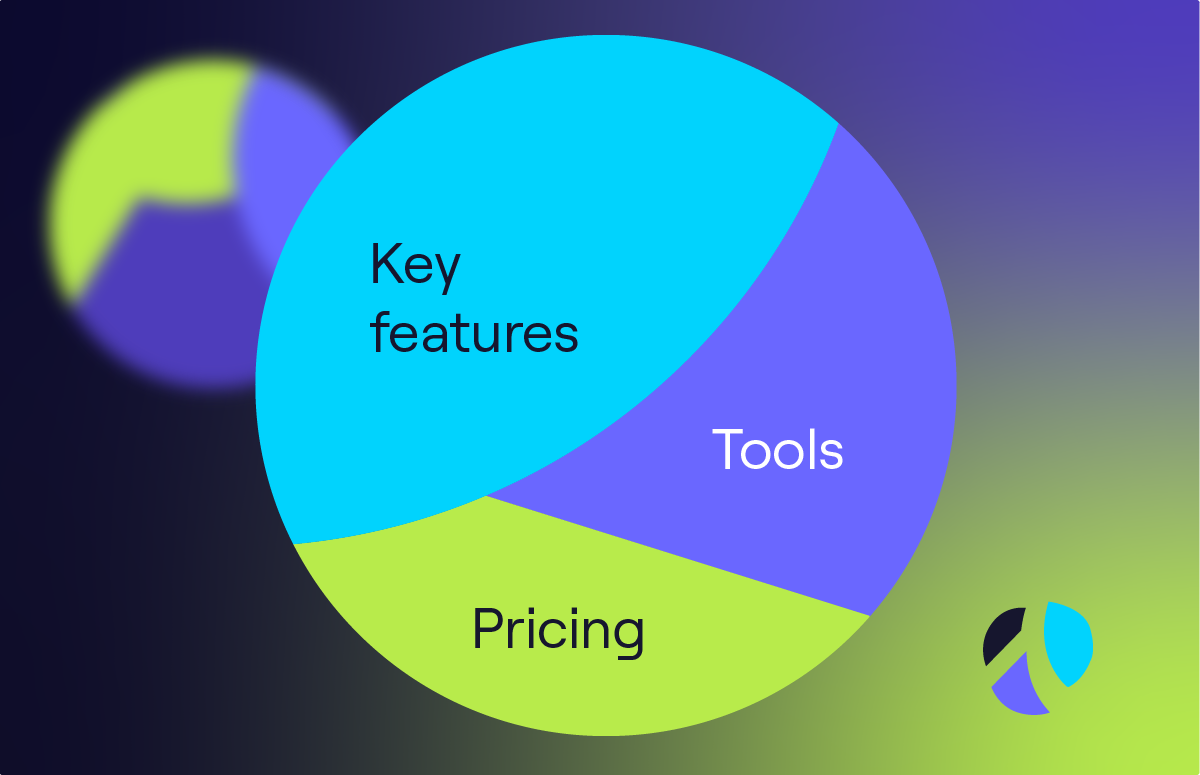What is Sales Data? Types, Tools, and Uses for B2B Teams
Sales data resources:
Sales data isn’t just numbers on a spreadsheet - it’s your unfair advantage.
Every decision counts in B2B SaaS sales, and data gives you the power to move faster, sell smarter, and outmanoeuvre the competition.
But here’s the kicker:
It’s not about how much data you have, it’s about how you use it.
In this article, we’ll dive into:
- How to find and leverage B2B data for better sales.
- The different types of data and how they benefit your sales department.
- How to effectively analyse sales data.
Let’s get started 👇
What is sales data?
Sales data is any machine-readable information beneficial to sales teams.
It helps you make informed decisions, build better relationships with customers, and improve your sales team’s performance.
Why is sales data important?
Sales data is important because it gives you a clear, measurable view of how your business is performing and where you can improve.
Here’s why it really matters:
1. Performance tracking
Sales data shows how well your team, product, or campaign is doing. You can track:
- Sales revenue growth.
- Win rates.
- Average deal size.
- Sales cycle length.
This helps you spot what’s working - and what’s not.
2. Forecasting
Accurate sales data helps you predict future revenue more reliably. This means:
- Better resource planning.
- Smarter budgeting.
- Fewer surprises for sales managers or investors.
3. Decision-making
Instead of guessing, you can make data-driven decisions around:
- Pricing structure.
- Territory management.
- Sales team structure.
- Product focus or feature development.
4. Customer insights
Sales data reveals:
- Which customers buy the most.
- What products or services are most popular.
- Buying patterns over time.
You can use these insights to personalise outreach or upsell more effectively.
5. Sales enablement
By analysing conversion rates, objection reasons, or deal progression, you can tailor training and tools to help your team sell more effectively.
⚠️ Check out Cognism’s guide to sales enablement.
6. Marketing alignment
Sales data uncovers which leads convert, how long the sales process takes, and what sources perform best.
It bridges the gap between sales and marketing, giving both teams a single source of truth to work from.
What are the different types of sales data?
To power a successful data-driven sales strategy, you need the following five types of data:
1. Demographic data
Demographic data is your potential customers’ basic information.
It consists of:
- Names.
- Email addresses.
- Telephone numbers.
- Locations.
- Employment histories.
- Job titles.
This type of data is the basis for B2B prospecting. Reps use it to contact buyers, initiate conversations, and secure meetings.
One very important thing to be aware of:
When you store demographic data, it can very quickly go out of date. People change companies and job titles all the time.
Therefore, you need to invest in a data enrichment tool that maintains your CRM records and refreshes your sales data regularly.
Cognism is one such tool! Salesloft worked with Cognism to enrich its database and the results were astounding 👇

Director of Marketing & Sales Development @Salesloft
2. Firmographic data
This is demographic data about companies, instead of people.
It includes the following data points:
- Company name.
- Company location.
- The industry the company operates in.
- Number of employees.
- Revenue information such as ARR.
This type of sales data is useful for planning GTM strategies and positioning your product in the market.
3. Technographic data
This data type refers to the categories of tech and software your prospects use, whether as individuals or as part of a company.
Examples include CRMs, B2B data providers, and sales enablement solutions.
Technographic data is extremely useful for business development teams. It allows them to better understand their prospects’ pain points.
Then, they can easily pitch their product or service as the solution.
4. Chronographic data
Also known as sales triggers, chronographic data refers to events and changes that occur as time progresses.
These changes can lead to an opening to engage with a new prospect or to revisit one that went cold.
Here are some examples of chronographic sales data:
- Company relocations.
- Company acquisitions.
- Company funding rounds.
- Company hiring rounds.
- Company IPOs.
- Prospects leaving or joining jobs.
- Prospect event appearances.
5. Intent data
Sales intent data is behavioural data on a company level.
It’s based on your customers’ online behaviour; it tracks their content consumption and the products they’re interested in.
Intent data helps salespeople to spot new opportunities, act faster, and personalise their outreach.
There are two types of intent data:
- First-party intent data: This is data a business collects about users from its own platforms and websites.
- Third-party intent data: This is data generated across several websites, focusing on a specific category. It gives you a more complete view of your prospect’s online research.
Cognism’s intent data
Cognism has teamed up with industry leader Bombora to provide intent data to its clients.
Bombora collects intent data from a cooperative of 5,000 B2B sites where buyers search for solutions. When combined with Cognism’s contact data, it becomes a game-changer for many companies.
Such as the IT services company Ultima. It used Cognism’s intent signal data and saw the following results:

Head of Cloud Sales @Ultima
How do you find sales data?
You can get sales data from numerous sources, but the most reliable method is to work with a reputable B2B database.
Companies like Cognism, ZoomInfo, and Lusha are some of the top choices when choosing a sales data provider.
These lead generation companies can help your team to:
- Build accurate prospecting lists.
- Enhance its database with quality GDPR-compliant data.
- Cut down on prospecting time and focus on closing new business.
- Identify prospects at the right time in their buying journey.
Choosing the right provider can be stressful, but Cognism’s here to help! Watch our video on making the right decision for your business 👇
How is sales data used?
If your team isn’t data-driven, you simply won’t achieve your sales goals.
Scroll down for our advice on how to use sales data 👇
1. Identify new opportunities
Your SDRs need data to pinpoint good-fit customers for their prospecting.
But not just any old data - they need quality data that includes relevant decision-makers and their contact details, and highlights when they’re ready to buy.
So, your sales database must include, as a minimum:
- The names of individuals.
- The names of their companies.
- Their job titles.
- Their business email addresses.
- Their direct dial phone numbers.
Sales and marketing data isn’t just useful for new business, either. You can use it to identify who in your customer base is ready for a cross-sell or upsell pitch.
Here’s how to do it:
- Review prospects’ purchase history and budget: This gives you information on your prospects’ current solution and their capacity to make a purchase.
- Analyse customer behaviour and build a persona: Study the patterns that emerge among your happiest customers, then use those insights to develop a persona for your ideal sales-ready customer.
- Monitor customer activity from your email campaigns: Record email opens, clicks, and clickthrough rates.
2. Avoid pursuing bad-fit customers
Selling to bad-fit customers has a significant impact on B2B sales.
You’ll see higher churn, lower customer retention rates, increased support costs, lower employee morale, a drag on growth and off-target feedback influencing product development.
Sales data helps you avoid this by allowing you to analyse the following:
- Customer’s technical fit: Do they need additional tech to get value from your product types?
- Functional fit: What do they require from you in order to be successful? Can you provide this?
- Resource fit: Do they have the necessary resources to invest in your product?
- Competence fit: Do they have the correct expertise to use your product?
- Cultural fit: Do their company goals align with yours?
3. Enable effective prospecting
Data is crucial to your reps’ sales efforts.
Finding leads, cold calling them, sending them emails or LinkedIn messages...all require contact data to get started.
Cognism gives you up-to-date, quality data for the companies and decision-makers you want to do business with - see below to take an interactive tour 👇
Then see our list of product features:
- Sales Companion (Web App): Access a vast database of contacts, companies, and buying signals.
- Sales Companion (Browser Extension): Access company and contact details on LinkedIn and other platforms.
- Diamond Data®: Phone-verified mobile numbers for B2B contacts.
- Intent data by Bombora: Identify companies researching topics relevant to your business.
- Cognism AI Search: Find prospects with ChatGPT-style text or voice prompts.
- Cognism Enrich: Instant and scheduled CRM enrichment and on-demand CSV enrichment.
- Seamless integrations with CRMs and sales and marketing tools.
- International coverage: EMEA, NAM, APAC.
- Fully GDPR and CCPA-compliant data.
- Database checked and cleaned against global DNC lists.
- Fast and friendly support team.
- Unrestricted access to person and company-level data (subject to fair use policy).
Interested? Click 👇 to talk to sales today!
4. Optimise the sales process
Every sales leader wants to improve the way their team works.
To do this, you need to gain actionable insights. It’s vital that your team tracks and measures B2B data, preferably on a weekly basis; the goal is to fine-tune your process and win long-term customers.
Consistent data tracking can help you pinpoint the bottlenecks in your pipeline. For example:
If a rep’s meeting booked rate falls from one week to the next, you can immediately implement a sales training program to get them back up to speed.
5. Provide sales forecasts
Sales forecasting empowers you to identify potential issues or risks and implement actions to mitigate them.
High-quality sales data leads to more accurate sales forecasts. The following data types help here:
- Historical sales data (closed deals, deal size, quota attainment, etc.).
- Pipeline data (open deals, engagement levels, deal velocity, etc.).
- Sales activity data (calls made/emails sent, meetings booked, time spent per opportunity).
- Rep and team performance data (win rate per rep, ramp time, quota attainment history).
- Firmographic and account data (company size/industry, buying committee size, tech stack composition).
- External signals (market trends, economic indicators, competitor moves).
6. Track performance against key objectives
Sales metrics are data points that represent your team’s performance, your organisation, or individual employees.
When measured against your broader company goals, you can introduce new processes to boost performance.
Some key metrics you should track include lead velocity, lead cost per conversion, call outcome, SQO pipeline, and sales velocity.
7. Support decision-making
You must keep your sales database updated to support your decision-making.
Up-to-date data predicts future trends, drives the creation of new business opportunities, optimises operational efforts, and ultimately generates new business revenue.
Most importantly, implementing a data-driven sales approach should develop, influence, and empower your sales team.
What are the best tools for managing sales data?
Here are the most powerful tools for managing sales data, broken down by purpose:
Data enrichment and validation tools
Ensure the data you’re working with is accurate, complete, and up to date.
Best for: Lead quality, contact data accuracy, territory planning.
Popular tools:
⚠️ See how Cognism compares to its competitors.
CRM (Customer Relationship Management)
The foundation of sales data! CRMs store and organise your team’s activity and customer interactions.
Best for: Contact management, pipeline tracking, reporting.
Popular tools:
- Salesforce
- HubSpot CRM
- Microsoft Dynamics 365
- Pipedrive
Business intelligence and analytics tools
These tools let you analyse and visualise sales trends over time.
Best for: Deep reporting, dashboards, sales forecasting.
Popular tools:
- Looker
- Power BI
- Tableau
- Zoho Analytics
Sales enablement tools
They help reps use data to engage prospects more effectively (with the right content, timing, or messaging).
Best for: Tracking engagement, content performance, buyer behaviour.
Popular tools:
- Highspot
- Seismic
- Showpad
Sales engagement platforms
They track outreach activity - such as calls, emails, cadences - and their effectiveness.
Best for: Outreach analytics, sales productivity.
Popular tools:
- Groove
- Outreach
- Salesloft
Revenue operations/RevOps platforms
For combining and cleaning sales data from multiple sources.
Best for: Data hygiene, pipeline health, forecast accuracy.
Popular tools:
- Clari
- Gong
- InsightSquared
- People.ai
Automation tools
They keep data flowing between systems without manual work.
Best for: Syncing CRM with marketing tools, auto-updating deal records.
Popular tools:
- Tray.io
- Zapier
- Workato
FAQs
How do you analyse sales data?
For effective sales data analysis, follow these two steps:
- Identify key sales metrics: Establish what metrics are important for your team to achieve when closing deals. For example, what is the average deal size and win rate?
- Use a CRM tool to track leads as they enter your pipeline: Review your Salesforce data regularly; monitor your growth rate to identify any problem areas.
Where is sales data collected from?
Data-driven sales teams get their data from two sources:
Public sources
Public sources refer to any data that’s freely available and in the public domain.
They include social media profiles, websites and online articles such as blog posts or press releases.
Another public source is consented-in data; that is, any data that prospects or customers freely supply (e.g., from online form fills or survey results).
Private sources
Private data sources are secured from public view. They can only be accessed via a subscription or a form of payment/permission.
They include DaaS (data as a service) providers, paywalled websites and financial/market intelligence platforms.
How do you verify sales data?
Sales data verification is a complex process. It requires data engineering, research, and analysis using advanced techniques and data intelligence tools.
How does it usually work?
Vendors collect, clean, transform, and model billions of data points from various credible sources. To identify useful information and verify it as correct, they use algorithms and machine learning models.
The best B2B data providers ensure sales data quality in multiple ways:
- Access the algorithm performance.
- Identify and fix bad records.
- Benchmark data quality against key KPIs (phone connect rate, email bounce rate, etc.).
Many sales database providers don’t verify their records manually because it takes too much time and resources.
But Cognism is an exception in that respect!
We take data verification to the next level through our exclusive data asset, Diamond Data®. It contains numbers that we know are correct - because we called them!
Yes, that’s right - our team dials the number and confirms its accuracy so that when you call, your prospect picks up.
Based on our research, we can guarantee that Cognism’s phone-verified mobiles will connect you with up to 87% of your list.
Cloud computing consultants Cloudreach used Diamond Data® to contact hundreds of leads per week 👇

SDR Manager @Cloudreach
How do you evaluate B2B sales data providers?
While vendors generally use similar data sources, they differ in terms of the methods they use to collect, clean, process, and redistribute the data. These methods influence the quality of the data you get.
When evaluating B2B sales data, balance the following factors:
- Accuracy.
- Coverage.
- Cost.
Some vendors specialise in covering specific data types, niches or regions, while others choose to process a large number of data sets worldwide.
For example:
If you’re mainly targeting the EMEA region, you might choose a European B2B data provider that understands GDPR privacy laws.
But if you need global sales data, make sure the vendor doesn’t prioritise data quantity over quality. If you can, always get a data sample and test its accuracy before making a firm decision.
Cognism provides 25 free leads as a data sample - click 👇 to test our data!
Another factor to consider is the cost of buying third-party sales data. You’ll often find the higher the quality, the higher the cost.
The major sales databases use credit-based pricing (which limits data views and exports) or demand extra fees for using additional features or integrations. This often leads to unexpected costs and a scarcity mindset among sales reps.
Cognism bucks this trend by providing credit-fee pricing, giving our customers unrestricted access to person and company-level data (subject to fair use policy).
Generate leads your sales team will love
Cognism is your partner for improving your sales data.
Here are just some of the benefits we’ve brought to our 3,000+ customers:
- SUB1 improved its mobile data quality by 80% after switching from Apollo to Cognism.
- Protolabs saw an email deliverability rate of 95-98% from using our data.
- Henderson Scott switched its data provision from Lusha to Cognism due to compliance concerns.
We’d love to do even better for you! As a start, why not try Cognism’s data for yourself? 👇



